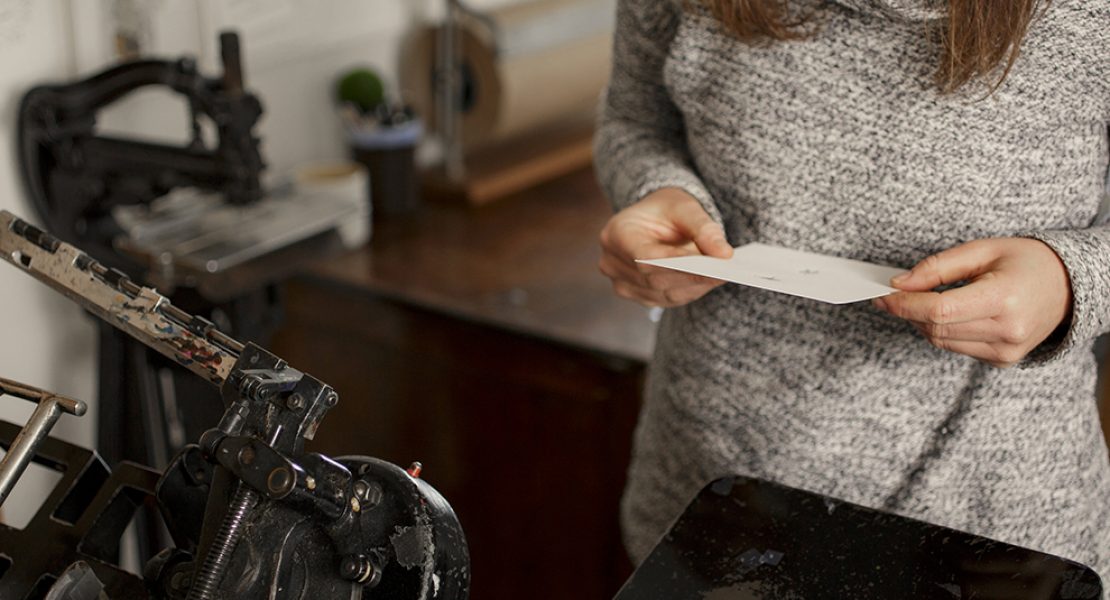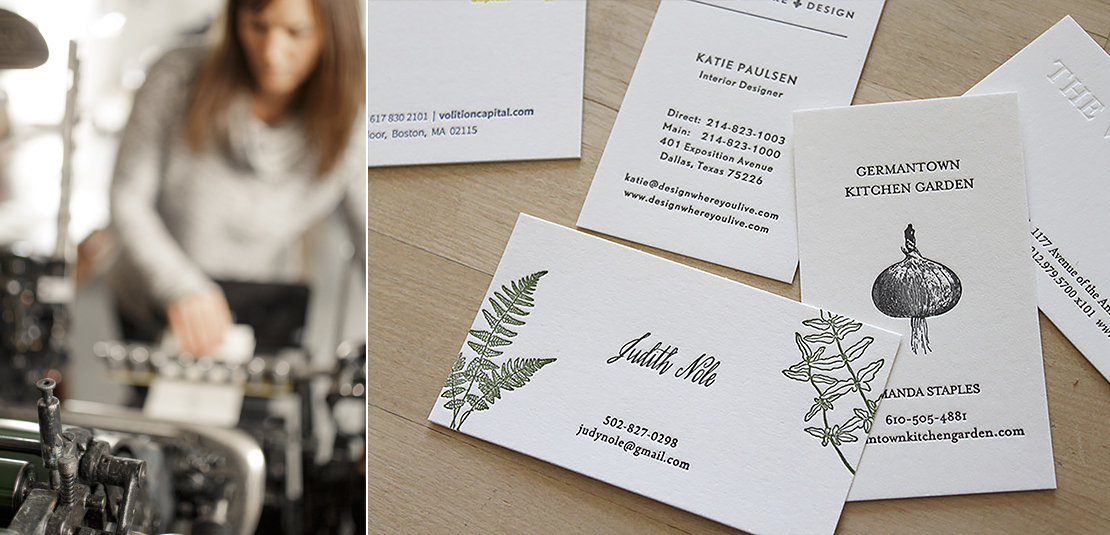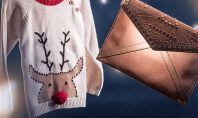Moontree Letterpress

This Bucks County artist combines nature and traditional printing to create everyday masterpieces.
Rebecca Kutys of Moontree Letterpress uses a printing press from the 1950s to do all her work.
“They don’t even make [the Heidelberg Windmill] anymore,” says Kutys, whose studio is located in the Bucks County town of Durham.
Nearly 15 years ago, Kutys, who was living in New York City and working at NBC, took her first printing class at the Center for Book Arts, a nonprofit organization that offers classes and programming focused on books as art.
“I’ve always been a creative person,” she says. “I’d never heard of letterpress printing, but it sounded really cool. It fascinated me as a craft.”
Letterpress is the OG when it comes to printing.
Letterpress is the OG when it comes to printing. Invented by Johannes Gutenberg—the father of modern printing—in the 15th century, letterpress is the relief printing of text and images, using a press with movable type or plates, in which a reversed, raised surface is inked and then pressed into a sheet of paper to obtain an image, Kutys explains.
Kutys rented a studio in 2005, but never really envisioned her hobby becoming her livelihood. But eventually, friends (and friends of friends) came to her for their printing needs, and in 2006, Kutys left her job in television and moved into her own studio in Brooklyn. In 2010, she went back to her roots and set up a studio in Durham.
Kutys’ company name, Moontree, was inspired by a 1972 NASA mission, in which tree seedlings were launched into orbit to study whether the flight had affected their growth or development.
“They called them moon trees,” says Kutys, who loves trees and astronomy. I was able to purchase a later-generation Sycamore moon tree seedling, and I planted it in my backyard six years ago. It’s unbelievably big now.”
Today, many of Kutys’ clients come from New York and her primary focus is wedding invitations with designs inspired by nature.
“Nature is just another one of my passions—gardening, horticulture,” she says. “I loved being in the city, but I missed the trees and nature.”
Kutys’ special projects, highlighted on her website, include work for high-profile clients: the Morgan Library and Museum, the Yale Center for British Art, and the White House. In 2011, Kutys created notebook covers, food labels, table signs, and tags for a White House vegetable garden luncheon hosted by Michelle Obama, as part of a magazine story for Better Homes & Gardens.
But Kutys’ favorite special project to date is the work she did for Drexel University’s Academy of Natural Sciences. She was awarded a fellowship, which gave her the opportunity to research the life cycle and migration patterns of monarch butterflies and then create prints based on her findings.
“It was a one-year project, and it was fun to be focused for so long,” she says.
Despite more and more people moving away from the traditional wedding invitation and looking to the Internet for paperless options, Kutys is confident her craft isn’t going away any time soon.
“I’ve learned over the years that when people get married there’s always something that they’re drawn to the most,” she says. “Some are into flowers and some are into food, but a lot of people who come to me for their invitations tell me, ‘I love paper.’”
Kutys hones her printing skills as the vehicles for communication change.
“We’re losing that feeling of the way we used to communicate, like sending a note to someone in the mail and putting a stamp on it,” she says.
But, as a friend pointed out to her, her craft—the method of letterpress printing—will never change. Today, the most modern part of Kustys’ work is creating a design file in the Adobe Illustrator program.
“I’m excited that I can dedicate myself to getting better at this one thing,” she says.

Milestones in Printing
3100 BCE: Cuneiform, one of the earliest known writing systems was developed in Sumer (modern-day Iraq), using wedge-shaped marks on clay tablets.
500: Papermaking was developed in Samarkand (modern-day Uzbekistan).
868: The Diamond Sutra, a Chinese translation of a Buddhist text is the oldest known dated printed text
1041: Movable type was invented in China.
1438–44: The adjustable type mold was developed by Johannes Gutenberg in Mainz (Germany).
1584: The University Press at Cambridge begins operation. Still working today, it’s the world’s oldest university press, and the oldest printing and publishing house.
1850: The Heidelberg printing press manufacturer was established in Heidelberg, Germany.























